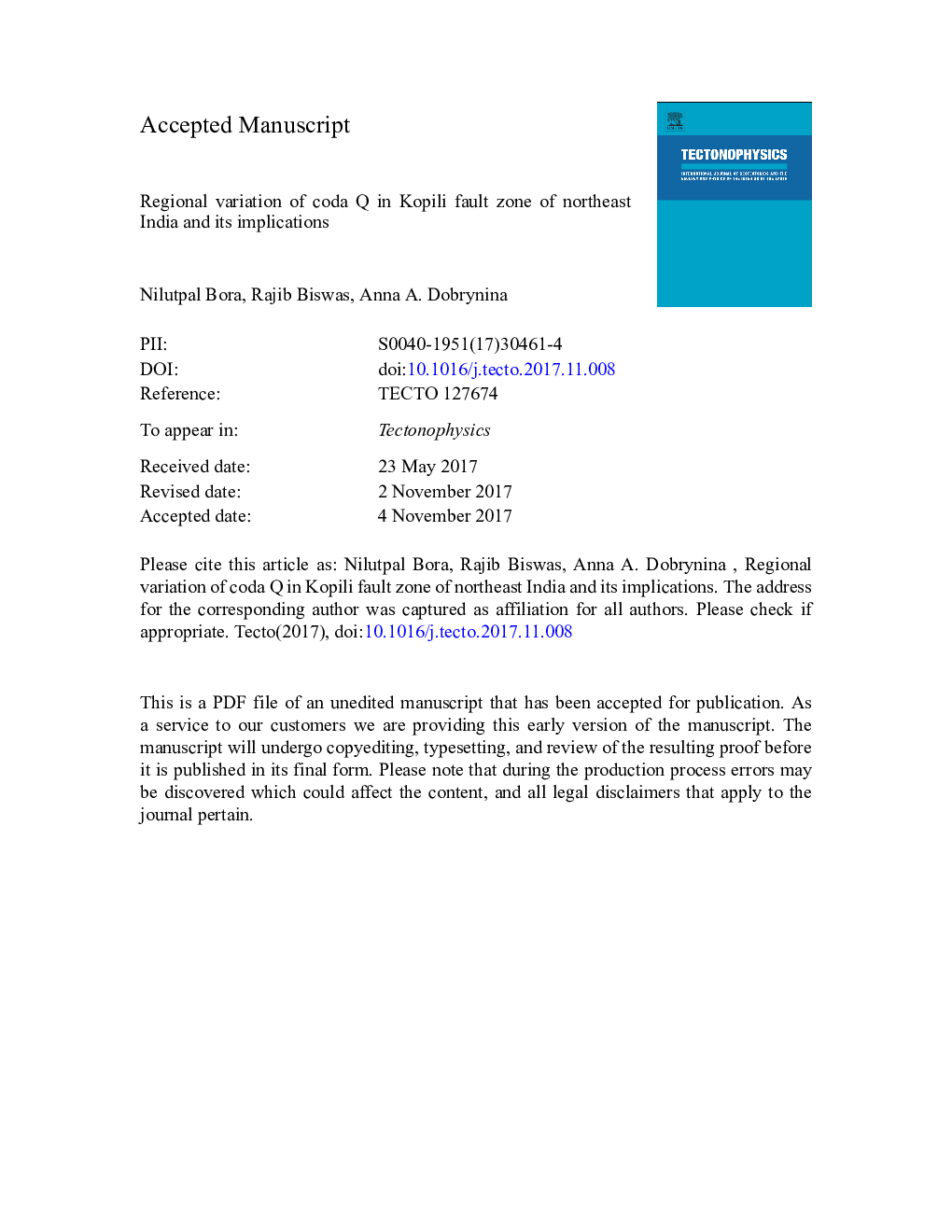| Article ID | Journal | Published Year | Pages | File Type |
|---|---|---|---|---|
| 8908818 | Tectonophysics | 2018 | 50 Pages |
Abstract
Kopili fault has been experiencing higher seismic and tectonic activity during the recent years. These kind of active tectonics can be inspected by examining coda-wave attenuation and its dependence with frequency. Exploiting single back-scattering model, we have endeavored to measure coda Q and its associated parameters such as frequency dependent factor (n) and attenuation coefficient (γ) covering seven lapse-time windows spanning from 30 to 90 s and central frequencies 1.5, 3.5, 6, 9 and 12 Hz. The average estimated values of QC increases with frequency and lapse time window from 114 at frequency 1.5 Hz to 1563 at frequency 12 Hz for 30 s window length, and from 305 at frequency 1.5 Hz to 2135 at frequency 12 Hz for 90 s window length. The values of Q0 and n are also estimated for the entire Kopili fault zone. For this study region, the Q0 values vary from 62 to 348 and n varies from 0.57 to 1.51 within the frequency range 1.5 to 12 Hz. Furthermore, depth variation of attenuation of this region reveals that there is velocity anomaly at depth 210-220 km as there arises sharp changes in γ and n which are supported by available data, reported by other researcher for this region. Finally, we have tried to separate the intrinsic and scattering attenuation for this area. It is observed that the entire region is dominated by mainly scattering attenuation, but we can see an increase in intrinsic attenuation with depths in two stations namely TZR and BKD. Furthermore, the obtained results are comparable with the available global data.
Related Topics
Physical Sciences and Engineering
Earth and Planetary Sciences
Earth-Surface Processes
Authors
Nilutpal Bora, Rajib Biswas, Anna A. Dobrynina,
